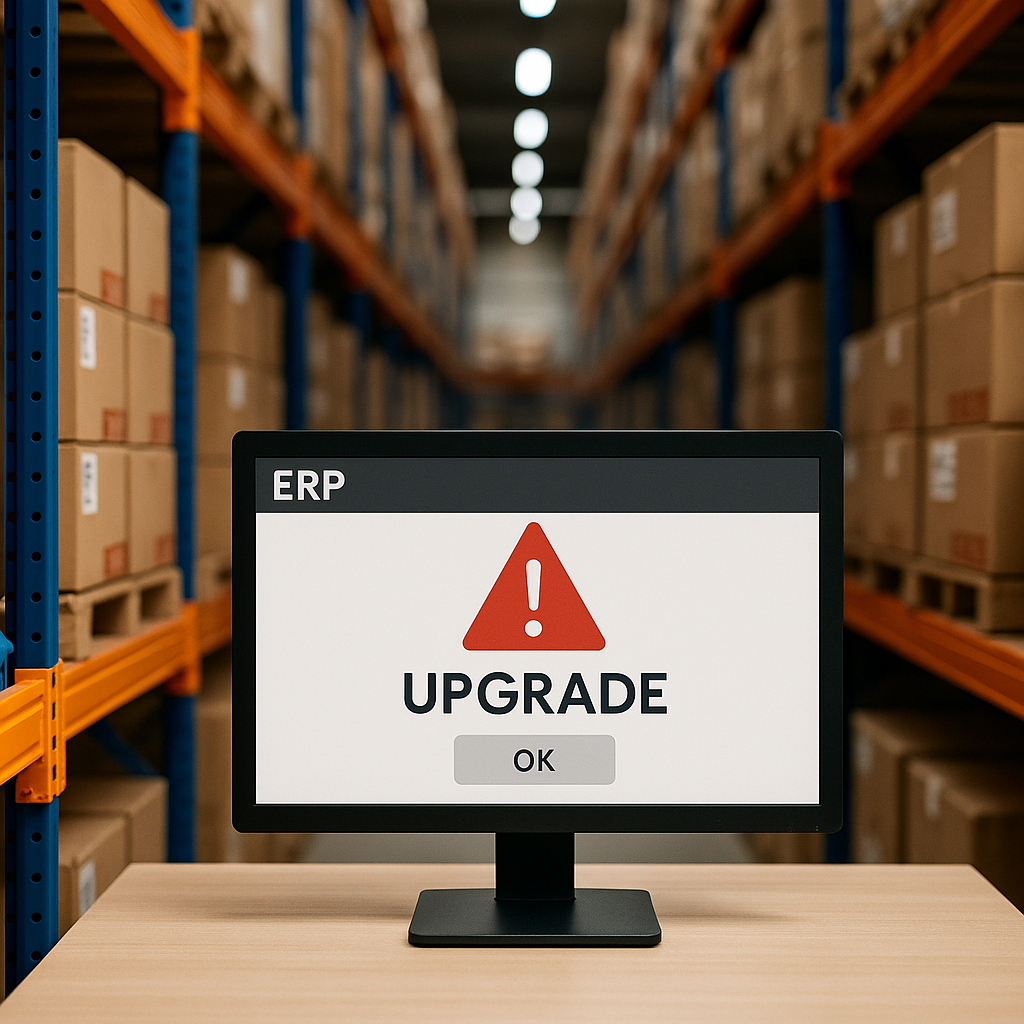At some point, every eCommerce business feels the friction. Things that used to hum along—inventory updates, fulfillment, vendor communication, reporting—start to feel clunky. Slow. Disconnected. You patch processes. You add spreadsheets. You ask your ops team to “just deal with it.”
But deep down, you know what’s happening: you’ve outgrown your ERP.
The truth is, most ERP systems aren’t designed to scale as fast as modern eCommerce businesses do. What worked when you had one channel and a few hundred SKUs starts to unravel when you’ve got marketplaces, warehouses, 3PLs, and product lines multiplying by the quarter.
And here’s the catch—it doesn’t usually fall apart overnight. The cracks show up as frustration. As friction. As “small” inefficiencies that quietly drag down speed, accuracy, and profit. The longer you wait to address them, the more painful (and expensive) they become.
So how do you know it’s time to level up?
Let’s walk through seven of the most telling signs that your ERP is holding you back—and explore how platforms like SKU.io were built specifically to solve these growth-stage pain points with precision, flexibility, and speed.
1. You’re Relying on Spreadsheets—Again
If your team is exporting data from your ERP to Excel just to make sense of inventory, POs, or forecasts, that’s a red flag. Spreadsheets aren’t just a workaround—they’re a symptom of an ERP that can’t flex with your operations.
Manual reports create lag. They increase errors. And they stop being useful the moment your data changes (which is constantly).
A modern system like SKU.io replaces the spreadsheet shuffle with live dashboards that update in real-time—so you’re not spending hours just trying to see what’s going on. You’re acting on it instantly.
2. Your Inventory Numbers Don’t Match Reality
When your ERP says you have stock—but your warehouse doesn’t—or vice versa—it erodes trust. You’re stuck double-checking POs, cross-verifying bins, calling team members to confirm what your software should already know.
Discrepancies kill efficiency and put customer trust on the line.
If inventory mismatches are happening more often, especially across multiple channels or warehouses, your ERP’s syncing capabilities are likely outdated. SKU.io ensures real-time inventory syncing across every platform and fulfillment location—so you can sell with confidence and eliminate the blame game.
3. You Can’t Forecast Accurately—And It’s Costing You
Maybe you’re overstocked on slow-moving SKUs. Maybe you’re constantly selling out of your top items. Maybe your team is building forecasts based on last year’s sales rather than real-time demand signals.
If your ERP can’t support SKU-level forecasting, trend analysis, or returns-adjusted planning, you’re flying blind.
Modern forecasting tools—like the ones built into SKU.io—dynamically adapt based on current velocity, supplier performance, seasonal shifts, and channel behavior. The result? Smarter reorders, fewer stockouts, and capital that’s working harder, not sitting idle.
4. Your Team Is Wasting Time on Manual Tasks
Here’s a clear signal you’ve outgrown your system: your team is constantly toggling between tools, keying in the same data in multiple places, or creating workarounds just to make processes flow.
You didn’t hire great people to be human middleware.
A scalable ERP should automate the basics: PO creation, inventory adjustments, order routing, supplier updates, and more. SKU.io automates and connects these workflows end-to-end, freeing up your team to focus on strategy, growth, and customer experience—not spreadsheet wrangling.
5. You’re Expanding Channels—But Your ERP Isn’t Keeping Up
You launch on Amazon. Add Walmart. Open a Shopify store. Then spin up a TikTok Shop or get listed in a wholesale marketplace. But your ERP can’t support these integrations—or it takes weeks to get them live.
Suddenly, you’re syncing inventory manually. Orders fall through the cracks. Fulfillment is split. And instead of scaling, you’re firefighting.
SKU.io is built for today’s channel diversity. It integrates seamlessly with top eCommerce platforms, marketplaces, 3PLs, and WMS tools. That means you can expand where your customers are—without breaking your internal systems in the process.
6. Your Reporting Doesn’t Drive Decisions
If your ERP reports are hard to customize, lagging behind real-time data, or only show basic inventory levels, you’re not getting what you need to lead.
You need reports that surface trends, flag anomalies, compare forecast vs. actual, and help you answer high-value questions like: “What’s driving stockouts?” “Where’s capital tied up?” “Which products are most profitable?”
SKU.io gives you that layer of intelligence. It connects the dots across sales, inventory, returns, and fulfillment so you don’t just get numbers—you get insights that drive action.
7. Your Growth Is Slowing—and You’re Not Sure Why
This is the most subtle but powerful sign: your growth engine is losing steam, and you can’t point to a single cause. Everything feels… heavier.
Reordering takes longer. Launches get delayed. Forecasts are off. Your ops team is burnt out. And while revenue is growing, margins aren’t.
This often happens when your infrastructure—your ERP included—can’t handle the complexity that comes with scale. You’re making do with a system designed for a smaller business, and the friction is dragging everything down.
Upgrading to a system like SKU.io isn’t just a technical decision—it’s a strategic one. It’s about enabling speed, visibility, and automation at the scale you’re operating today—and where you’re heading next.
Final Thoughts: Don’t Let Your ERP Be the Ceiling
You didn’t build your eCommerce brand to be limited by your software. But that’s what happens when your ERP can’t evolve with you.
The signs are there. If you’re experiencing any of the challenges above, it’s time to explore a better fit. And not just for today—but for where your business is heading next quarter, next year, and beyond.Want to see what a modern, scalable ERP built for growing eCommerce brands looks like? Take 15 minutes and let SKU.io show you how effortless ops can be.
